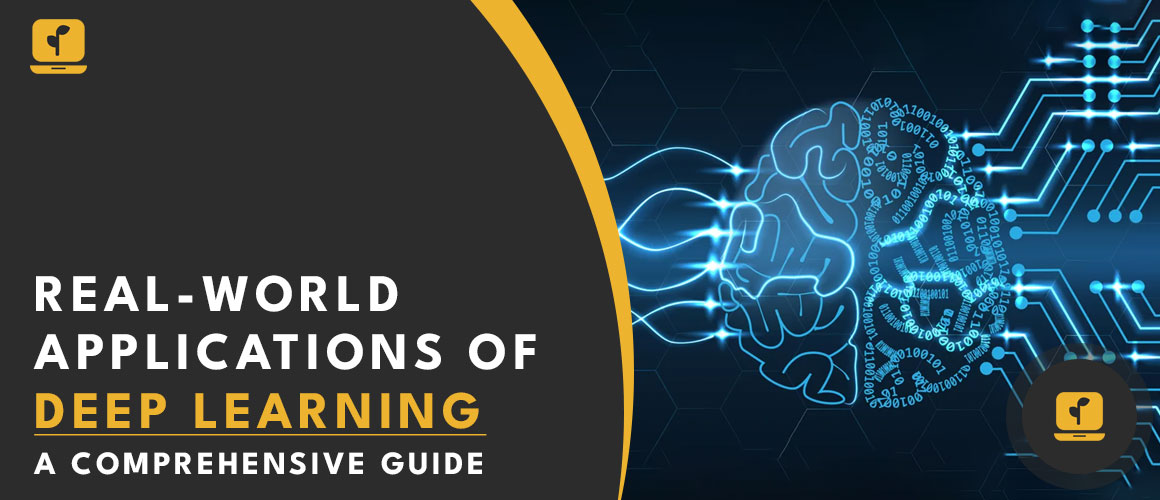As an AI enthusiast and researcher, I have always been intrigued by the various applications of deep learning in real-life scenarios. In this comprehensive guide, I will take you through the basics of deep learning, its importance in artificial intelligence, and its real-life applications across various industries.
Table of Contents
What is deep learning and how does it work?
Deep learning is a subset of machine learning that involves the creation of complex neural networks that are capable of learning and making decisions on their own. Essentially, deep learning models are designed to identify patterns in large datasets and develop insights that can be used to make predictions or classifications.
Deep learning works by using a layered approach to processing data. The input data is fed into the first layer of the neural network, which processes the data and passes it on to the next layer. This process continues until the output layer is reached, which produces the final prediction or classification based on the input data.
The importance of deep learning in artificial intelligence

Deep learning is an essential component of artificial intelligence because it enables machines to learn from experience and improve their performance over time. This is critical in applications where traditional rule-based systems would not suffice, such as image and speech recognition, natural language processing, and autonomous vehicles.
By leveraging deep learning, machines can identify patterns in data that are not readily apparent to humans, enabling them to make predictions and classifications with a high degree of accuracy. This has significant implications for industries such as healthcare, finance, and manufacturing, where precise predictions and classifications can lead to better outcomes and improved efficiency.
Real-world applications of deep learning in various industries
The applications of deep learning are vast and varied, with real-life examples across a range of industries. In healthcare, deep learning is being used to improve disease diagnosis and treatment, with models trained to identify early signs of diseases such as cancer and Alzheimer’s.
In finance, deep learning is being used to detect fraudulent activities, with models trained to identify suspicious transactions and flag them for further investigation. In manufacturing, deep learning is being used to improve quality control, with models trained to identify defects in products and prevent them from reaching customers.
Common applications of deep learning in artificial intelligence
There are several common applications of deep learning in artificial intelligence, including image and speech recognition, natural language processing, autonomous vehicles, and fraud detection.
Image and speech recognition models are trained to identify and classify visual and auditory data, enabling machines to recognize objects, faces, and speech patterns. These models are used in a range of applications, from facial recognition software to voice assistants such as Siri and Alexa.
Natural language processing models are trained to analyze and understand human language, enabling machines to read and interpret text, translate between languages, and even generate human-like responses. These models are used in applications such as chatbots, virtual assistants, and speech-to-text software.
Autonomous vehicles are a rapidly growing application of deep learning, with models trained to identify and respond to traffic signals, road signs, and other vehicles on the road. These models are critical to the development of self-driving cars and other autonomous vehicles.
Fraud detection is another common application of deep learning, with models trained to identify patterns of fraudulent behavior and flag suspicious activities. These models are used in applications such as credit card fraud detection and anti-money laundering.
The benefits of using deep learning in business and industry
The benefits of using deep learning in business and industry are significant, with applications ranging from improved efficiency and accuracy to better decision-making and cost savings. By leveraging deep learning, businesses can identify patterns in data that would be impossible to detect using traditional methods, enabling them to make better predictions and classifications.
Deep learning can also help businesses automate repetitive tasks, freeing up valuable time and resources that can be directed towards more strategic initiatives. This can lead to improved efficiency and productivity, as well as cost savings in the long run.
How deep learning models are created and trained
Deep learning models are created and trained using a combination of data and algorithms. The first step in creating a deep learning model is to define the problem and the desired outcome. Once this is done, data is gathered and preprocessed to prepare it for input into the model.
The next step is to choose an appropriate algorithm and architecture for the model, based on the problem and the data. This is followed by the training phase, where the model is fed the input data and the algorithm adjusts the weights of the neural network to optimize performance.
The final step is to evaluate the performance of the model on a test dataset and fine-tune it as necessary. This process is iterative and may require multiple rounds of training and evaluation before a satisfactory level of performance is achieved.
The role of deep neural networks in deep learning
Deep neural networks are a critical component of deep learning, as they enable machines to learn from experience and improve their performance over time. Deep neural networks are designed to process large amounts of data and identify patterns that are not readily apparent to humans.
The architecture of deep neural networks is based on the structure of the human brain, with layers of interconnected nodes that process and analyze data. The weights of these connections are adjusted during the training phase to optimize performance and improve accuracy.
Tools and frameworks for developing deep learning applications
There are several tools and frameworks available for developing deep learning applications, including TensorFlow, PyTorch, and Keras. These frameworks provide a range of tools and libraries for building and training deep learning models, as well as tools for data preprocessing and visualization.
In addition to these frameworks, there are also several cloud-based solutions that provide pre-built deep learning models and APIs for image and speech recognition, natural language processing, and other applications.
Challenges and limitations of deep learning
Despite its many benefits, deep learning also has several challenges and limitations. One of the biggest challenges is the need for large amounts of high-quality data to train models effectively. In addition, deep learning models can be computationally intensive and require significant resources to train and run.
Another limitation of deep learning is the potential for bias in the training data, which can result in biased predictions and classifications. This is particularly important in applications such as healthcare and finance, where biased predictions can have significant consequences.
Conclusion: The future of deep learning and its impact on artificial intelligence
As deep learning continues to evolve, it is likely that we will see even more applications across a range of industries. From healthcare and finance to transportation and manufacturing, the potential benefits of deep learning are vast and varied.
However, it is important to recognize the challenges and limitations of deep learning, particularly around the need for high-quality data and the potential for bias. As we continue to develop and refine deep learning models, it will be critical to address these challenges and ensure that the benefits of deep learning are realized in a responsible and ethical manner.










